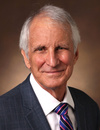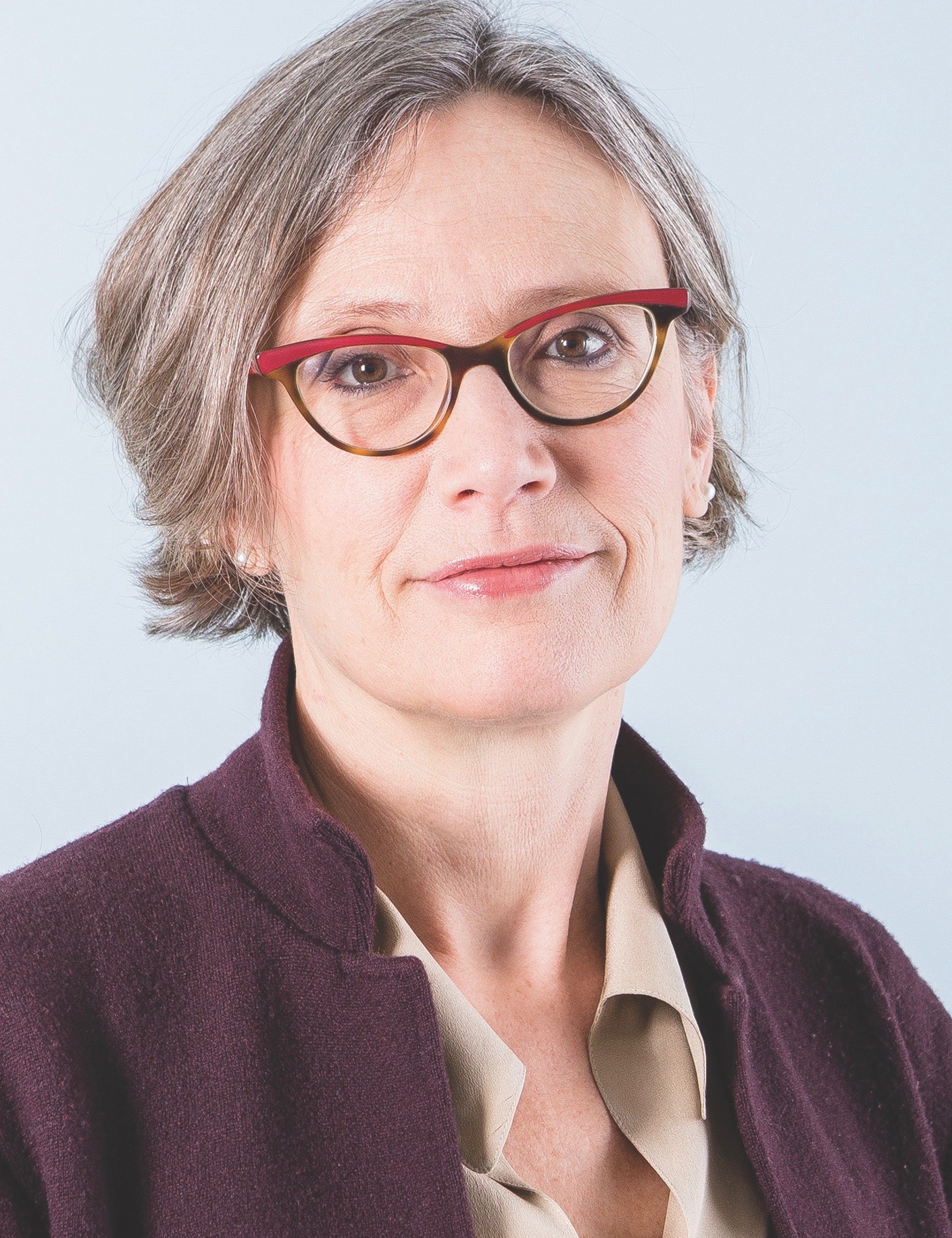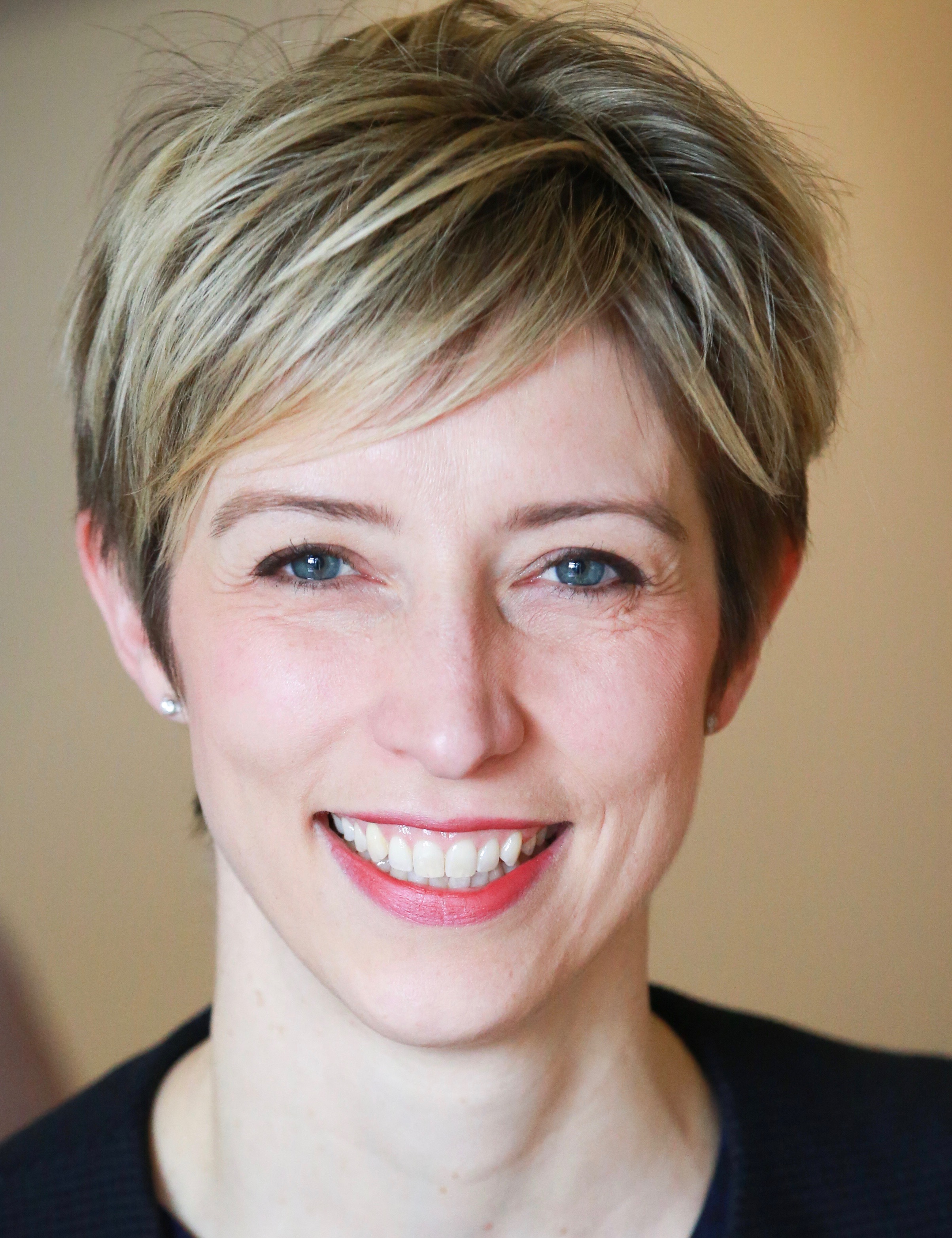08:00 | Conference Registration, Materials Pick-Up, Morning Coffee and Pastries |
|
Session Title: Opening Plenary Session | Session Sponsors |
| |
09:00 |  | Keynote Presentation Integration of Systems Biology with Organs on Chips for Disease Modeling and Drug Development
Linda Griffith, Professor, Massachusetts Institute of Technology (MIT), United States of America
|
|
09:30 |  | Keynote Presentation Fitting iPSCs, 3D Cell Culture, Tissue Chips and Microphysiological Systems into the Grand Scheme of Biology, Medicine, Pharmacology, and Toxicology
John Wikswo, Gordon A. Cain University Professor, A.B. Learned Professor of Living State Physics; Founding Director, Vanderbilt Institute for Integrative Biosystems, Vanderbilt University, United States of America
As the engineering supporting body-on-chip (BoC) studies advances and
begins to penetrate both science and industry, we need to explore three
separate multidimensional spaces – one that spans BoC components, one
that covers the analytical techniques to characterize BoC performance
and drug response, and a third that spans the fields of application.
The component technologies being brought together include induced
pluripotent stem cells (iPSCs), 3D cell culture (which is beginning to
involve vascularization), tissue-chip bioreactors that enable the
recreation to tissue-like microenvironments, and the hardware required
to operate coupled microphysiological systems in a manner that
recapitulates human physiology and its response to drugs and toxins. The
second, analytical space is only now coming to the fore. To date, most
tissue-chip studies have reported morphological features, the expression
of small sets of genes, or the secretion of a few, organ-specific
compounds. A much more comprehensive battery of techniques is already in
regular use in the pharmaceutical industry, including genomics,
proteomics, and transcriptomics. Metabolomics is rapidly moving into
prominence as the instrumentation improves and the databases expand.
What is needed, though, are comprehensive comparisons between in vitro
and in vivo studies, as has been recently demonstrated with a weighted
gene coexpression network analysis that compare rat liver in vivo with
both mouse liver in vitro and rat primary hepatocytes growing in a dish,
which showed that a mouse liver was a better model of the rat liver
than the primary rat hepatocytes in a dish, which more closely resembled
a rat liver exposed to a significant toxic load. The BoC community
needs to compare, for example, a mouse with a mouse-on-a-chip to confirm
that the appropriate physiology is being recapitulated. The final space
spans biology, medicine, pharmacology, physiology and toxicology. BoCs
offer, for the first time, the ability to recreate in vitro and in
parallel, with an ever-dropping cost, the effects of organ-organ
interactions. Nowhere will this be more important than in studies of
absorption, distribution, metabolism, and excretion - toxicity
(ADME-Tox), where one may need skin, lung, or gut to absorb a drug or
toxin, liver and kidney to metabolize and excrete drug metabolites and
toxins, adipose and muscle tissue to store metabolites and toxins, and a
means to characterize in depth the underlying processes and how they
affect the chosen target organs. BoCs will thereby contribute not only
to toxicology, but our fundamental understanding of cellular biology and
systems physiology, thereby advancing both pharmacology and medicine.
Given that we will never create a perfect microHuman BoC, we can use
these three spaces to guide the compromises we make as we create useful
models, even toy models, of human physiology. |
|
10:00 |  | Keynote Presentation Engineered Living Systems: Current State and Future Potential
Roger Kamm, Cecil and Ida Green Distinguished Professor of Biological and Mechanical Engineering, Massachusetts Institute of Technology (MIT), United States of America
Following on recent advances in understanding single cell behavior (Carrera & Covert, Trends in Cell Biology, 2015), and in developing simple, proof-of-concept biological machines (Raman et al., PNAS, 2015, Park et al., Science, 2016), organoids (Fatehullah et al, Nature Cell Biology, 2016), and organ-on-chip technologies (Huh, et al., Science, 2010), efforts are underway to standardize manufacturing methods for engineered living systems (ELS). The approaches proposed, however, are widely divergent and often lack a sound basis due to the absence of a fundamental understanding of aspects unique to ELS – e.g., complexity, the central role of emergence – and fail to take advantage of their extraordinary capabilities – self-assembly, growth, self-repair, adaptation, learning.
We need to build on our current knowledgebase for the development and design of ELS, rethinking much of what we have learned from abiotic engineered systems. A major effort is therefore required to characterize, model and image the dynamical behavior of ELS, and thus establish the design principles needed for robust manufacture. While many ELS can survive merely by diffusion of gases and nutrients from their environment, most systems exceeding several hundred microns in lateral dimension require some means for convective transport, such as the circulatory system found in many living organisms. Several approaches have been employed to meet these needs, either by engineered conduits or induced network growth from seeded or suspended cells. In this talk, some of these methods will be described, focusing on networks that form by self-assembly, tend toward a stabilized perfusable network within 1-2 weeks, synthesize and organize their own matrix environment, and adapt to changing conditions. Both the successes and challenges of creating these networks will be discussed with the aim of developing reliable, vascularized ELS amenable to biomanufacture. |
|
10:30 | Coffee Break and Networking in the Exhibit Hall |
11:00 |  | Keynote Presentation Human “Body-on-a-Chip” Systems to Test Drug Efficacy and Toxicity
Michael Shuler, Samuel B. Eckert Professor of Engineering, Cornell University, President Hesperos, Inc., United States of America
Human microphysiological or “Body-on-a-Chip” systems are powerful tools to assess the potential efficacy and toxicity of drugs in pre-clinical studies. Having a human based, multiorgan system, that emulates key aspects of human physiology can provide important insights to complement animal studies in the decision about which drugs to move into clinical trials. Our human surrogates are constructed using a low cost, robust “pumpless” platform. We use this platform in conjunction with “functional” measurements of electrical and mechanical activity of tissue constructs (in collaboration with J. Hickman, University of Central Florida). Using a system with four or more organs we can predict the exchange of metabolites between organ compartments in response to various drugs and dose levels. We will provide examples of using the system to both predict the response of a target tissue as well as off-target responses in other tissues/organs. We believe such models will allow improved predictors of human clinical response from preclinical studies. |
|
11:30 |  | Keynote Presentation Human Emulation System: an Organs-on-Chips Platform for Advancing Drug Discovery and Development
Katia Karalis, Executive Vice President of Research, Emulate, Inc., United States of America
Micro-engineered Organs-on-Chips show physiological functions consistent with normal living human or animal cells in vivo. Each Organ-Chip is composed of a clear flexible polymer about the size of a AA battery that contains hollow channels lined by living human cells. The cells are cultured under continuous flow and mechanical forces thereby recreating key factors known to influence cell function in vivo. Cells cultured under continuously perfused, engineered 3D microenvironments go beyond conventional 3D in vitro models by recapitulating in vivo intercellular interactions, spatiotemporal gradients, vascular perfusion, and mechanical microenvironments. Integrating cells within Organs-on-Chips, enables the study of normal physiology and pathophysiology in an organ-specific context. Cellular/molecular level resolution is enhanced and demonstrates key insights into the mechanisms of action of drug induced toxicity. Numerous recent advances in applications of these systems are relevant in drug discovery/development for compound selection, and in de-risking mechanistic concerns using various organ systems. In this presentation we will highlight studies from collaborative efforts across our Human Emulation System with various academic and industry partners to demonstrate the utility of the system as a more predictive human-relevant alternative for efficacy and safety testing of new chemical entities in humans. |
|
12:00 |  | Keynote Presentation Novel Microphysiological Multi-Organ Systems for Studies of Human Metabolic Diseases in Drug Discovery
Tommy Andersson, Drug Metabolism and Pharmacokinetics, Cardiovascular and Metabolic Diseases, AstraZeneca, Gothenburg, Sweden
Currently used pre-clinical models often suffer from poor translation of
drug responses to the patient due to the limited knowledge gained in
the efficiency and mode of action of the drug candidate. This
contributes to high attrition rates in early clinical programs. Multi
organ-on-a-chip emulating human physiology have the possibility to
improve success rate by mimicking the human disease state and improve
selection of the right targets and compounds early in drug discovery.
Such models will not only improve translation to patients but also
reduce time spent in early clinical programs as well as reducing the
needs for animal models. We developed a human liver - pancreatic islets
chip model. The model allows cross talk between cells from both organs
in a fluidic system and responds in a physiological way to glucose load
by increased insulin secretion leading to increased glucose consumption
(figure). Initial studies indicate that the model can become insulin
resistant and thus can be used as a metabolic disease model. Ongoing
studies are investigating how insulin resistance in liver cells effects
islet function by using the insulin receptor antagonists. |
|
12:30 | Networking Lunch in the Exhibit Hall, Meet Exhibitors and View Posters |
|
Session Title: Emerging Themes and Technologies in 3D-Culture and Organs-on-Chips |
| |
13:30 |  | Keynote Presentation Regulatory Aspects of Functional Organ-on-a-Chip Systems for Preclinical Drug Discovery and Toxicology
James Hickman, Professor, Nanoscience Technology, Chemistry, Biomolecular Science and Electrical Engineering, University of Central Florida; Chief Scientist, Hesperos, United States of America
One of the primary limitations in drug discovery and toxicology research is the lack of good model systems between the single cell level and animal or human systems. In addition, with the banning of animals for toxicology testing in the EU, the development of body-on-a-chip systems to replace animals with human mimics is essential for product development and safety testing. Our research focus is on the establishment of functional in vitro systems to address this deficit where we seek to create linked multi-organ mimics and their subsystems to model motor control, muscle function, myelination and cognitive function, as well as cardiac conduction and force generation. The idea is to integrate microsystems fabrication technology and surface modifications with protein and cellular components, for initiating and maintaining self-assembly and growth into biologically, mechanically and electronically interactive functional multi-component systems in a circulating serum-free medium. Our philosophy is to start with 2D systems and only add complexity as needed to address biological questions to keep cost of the system at a minimum. We are using this ability to manipulate biological systems and integrate them with silicon-based systems to create body-on-a-chip systems for high content drug discovery. Examples will be given of some of the more advanced body-on-a-chip systems including a recent 4-organ system, neuromuscular junction system and integrated cancer subsystems that are being developed as well as the results of six workshops held at NIH to explore what is needed for validation and qualification of these platforms. |
|
14:00 | Using 3D Cultures of Human Brain Tissue for Pathway Discovery and Validation
William Gray, Professor of Functional Neurosurgery, Cardiff University School of Medicine, United Kingdom
We have developed a novel 3D culture system for human cortex and hippocampus using fresh surgically resected tissue. We have used this to investigate pathways controlling adult hippocampal neurogenesis in-vitro ranging from pathway discovery and validation to novel compound testing. |
14:30 |  Technology Spotlight: Technology Spotlight:
A Benchtop Microfluidic Platform for Culturing Tissue with Live Imaging Under Physiological Flow Conditions
Thomas Corso, Chief Technical Officer, CorSolutions
To date, tissue culture with live imaging under physiological flow conditions is challenging. To address these difficulties CorSolutions has developed a Benchtop Microfluidic Culture Platform for studying tissue culture under physiologically relevant conditions outside of an incubator. This flexible, universal platform incorporates fluidic interconnects, pulse-free fluid delivery pumps, and optics to offer a simple alternative to the conventional incubator. The Benchtop Microfluidic Culture Platform can interface a variety of microfluidic devices to the macro world. To evaluate the platform, perfused microvessels consisting of human umbilical cord vascular endothelial cells, expressing green fluorescent protein, were cultured. The approach allowed for live cell imaging while subjecting the culture to the physiological shear stress of 15 dynes/cm2, throughout the 3 day experiment. The results showed an unexpected active migration of cells both with and against the flow, including traversal of the branching channels, and their eventual alignment and polarization in the direction of flow. The live imaging revealed cell behavior that had never before been observed as endothelial cells had been believed to be quiescent, undergoing mitosis only once every one to two years. Although the implications of the observed cell migrations are not yet known, it is clear that the Benchtop Microfluidic Culture Platform is a tool with tremendous potential for probing cellular behavior.
|
15:00 | Coffee Break and Networking in the Exhibit Hall |
15:30 |  Technology Spotlight: Technology Spotlight:
Leveraging Microfabrication to Create Scalable Complex in vitro Models of Tissue
Joseph L Charest, Program Manager, Charles Stark Draper Laboratory
We present a microfluidics-based model tissue which expresses active organ-specific function. Controlled microfluidic fluid flow, cell-substrate topography, and cell-cell cues are used to create tissue which can be evaluated within the microfluidic architecture for barrier function and active transport function. To achieve higher levels of throughput, the model can be replicated within a 96-well format while still maintaining the unique characteristic of controlled flow. To improve data collection, integrated electrical traces measure trans-epithelial/endothelial electrical resistance (TEER) in near real-time and provide a means to create additional sensing capabilities in the future. The microfluidic model demonstrates the ability to generate tissue in vitro with tissue-specific function, provides near real-time feedback on tissue barrier function, and can scale to relevant levels of throughput resulting in a screening tool for drug interaction with transport tissues.
|
16:00 |  Technology Spotlight: Technology Spotlight:
Hybrid Sensor Integration in Resealable Microfluidic Flowcell Systems as a Toolbox for Organ-on-a-Chip Applications
Herman Blok, Business Development Manager, Micronit Microtechnologies
Building on our microfluidic platform technology and interfacing solutions for Organ-on-a-Chip applications we demonstrate here integrated sensors based on electrode-integration for TEER (trans epithelial electrical resistance) or EIS (electrochemical impedance spectroscopy), as well as chemical sensors, such as oxygen sensors.
|
16:30 | Microfluidic Organ-on-a-Chip Devices for Stem-Cell Cultivation, Differentiation and Toxicity Testing
Holger Becker, Chief Scientific Officer, Microfluidic ChipShop GmbH, Germany
We have developed diagnostic multi-organ microfluidic chips based on patient specific induced pluripotent stem cell (iPS) technology to explore liver dependent toxic effects of drugs on individual human tissues such as liver or kidney cells. Based initially on standardized microfluidic modules for cell culture, we have developed integrated microfluidic devices which contain different chambers for cell/tissue cultivation as well as on-chip cell-culture medium actuation with an on-board peristaltic pump and gas exchange using integrated membranes. The devices are manufactured using industrial manufacturing methods. In the project, suitable surface modification methods of the used materials as well as hybrid integration of different elements had to be explored. We have been able to successfully demonstrate the seeding, cultivation and further differentiation of modified iPS, as shown by the use of differentiation markers, thus providing a suitable platform for toxicity testing and potential tissue-tissue interactions. |
17:00 |   | Moderator Fireside Talk: Fusing Microphysiological Systems and Systems Biology Toward Fulfilling Their Promise
Emma Sceats, Chief Executive Officer, CN Bio Innovations Ltd.
Douglas Lauffenburger, Professor/Head, Massachusetts Institute of Technology, United States of America
This fireside talk will examine advances in the field of systems biology and how the marriage of computational systems biology and microphysiological systems will be of significant importance to progress in both of these fields during the next decade.
Beer and Wine will be served during this fireside talk to facilitate networking and engagement. |
|
18:00 | Networking Cocktail Reception with Beer, Wine and Appetizers. Enjoy the Boston Skyline, Engage with Colleagues and Discuss Collaborations and Partnerships |
19:30 | Close of Day 1 of the Conference |
19:45 | Dinner Short Course on 3D-Culture [Separate Registration Required] |














